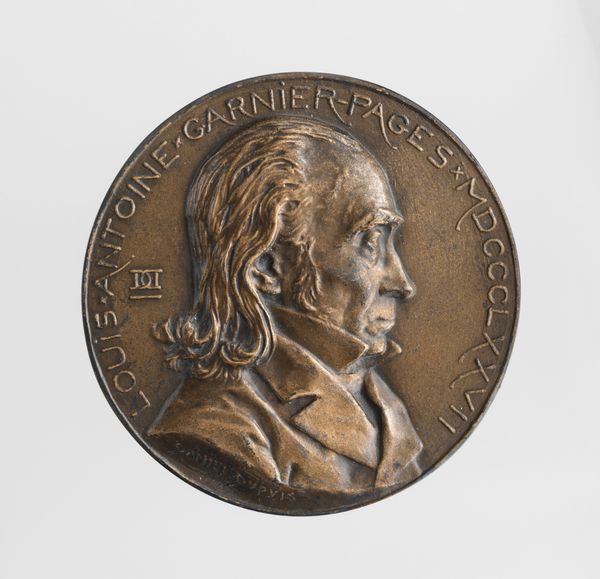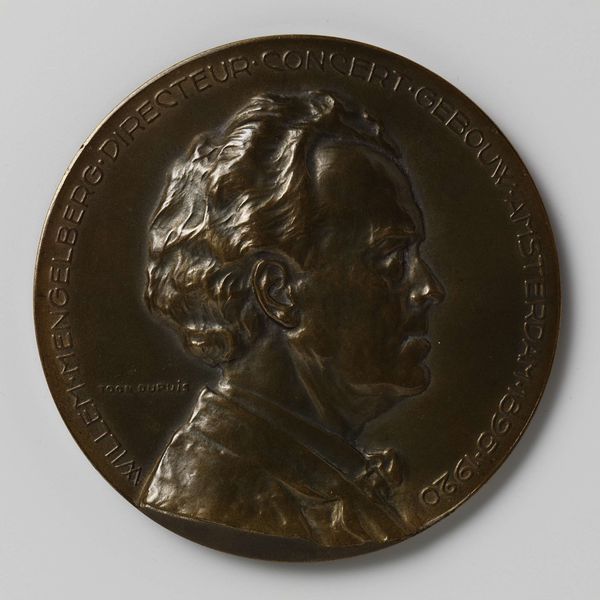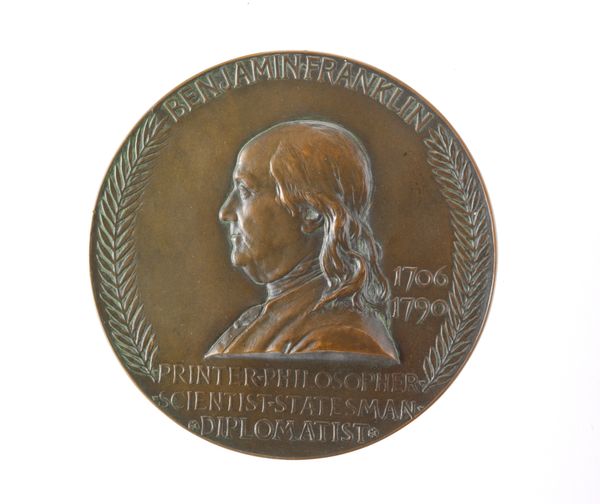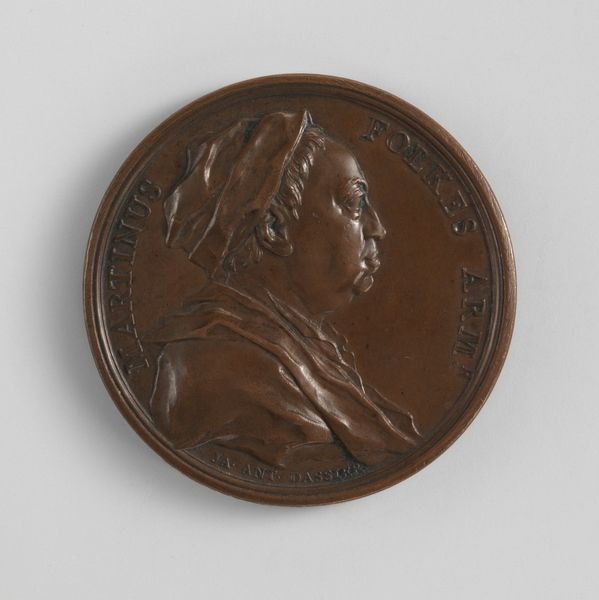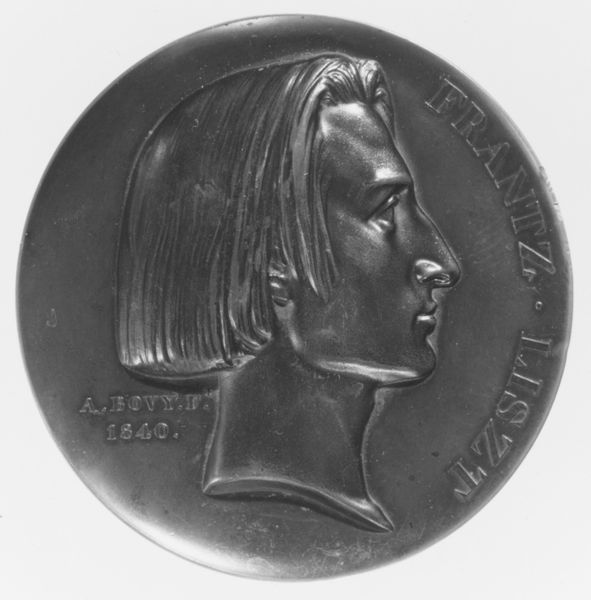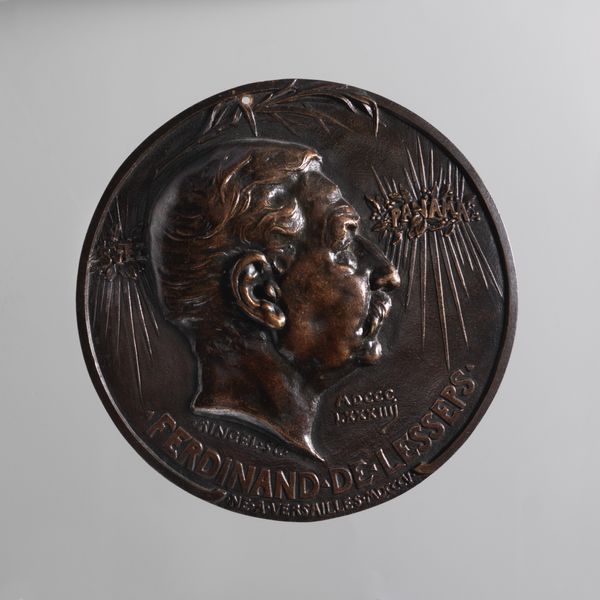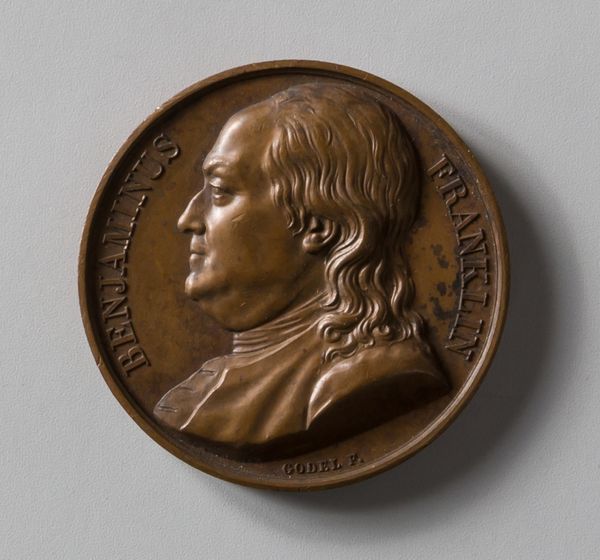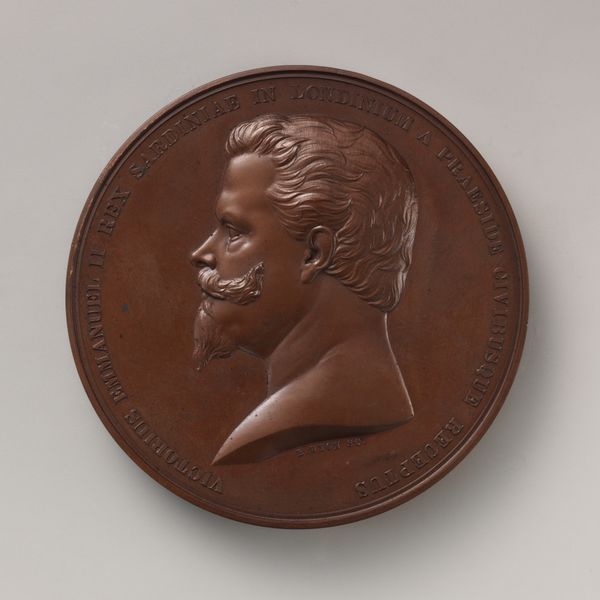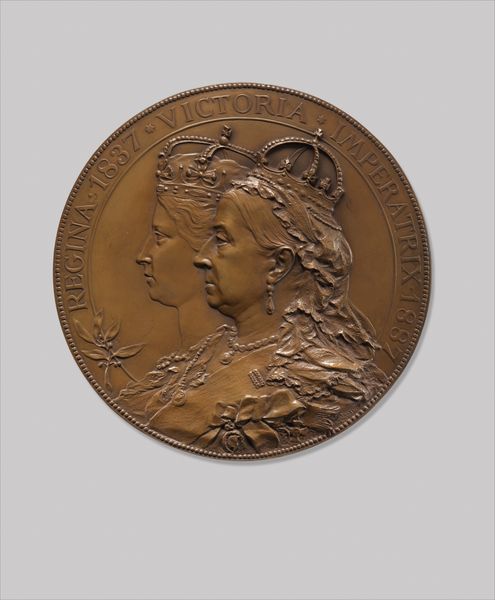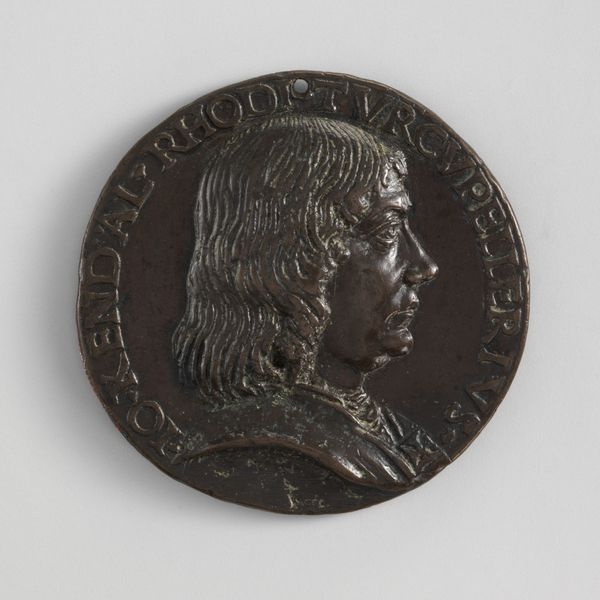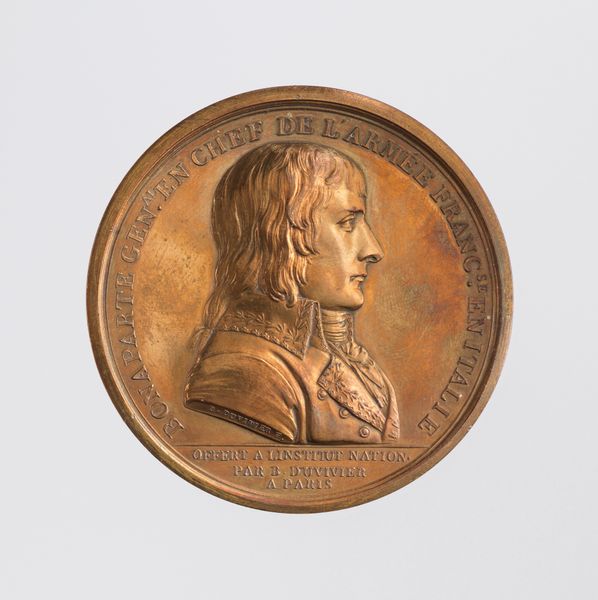
"Joseph," Hin-mah-too-yah-lat-kekht, Chief of the "Nez Percé" Indians 1889 - 1906
0:00
0:00
relief, bronze, sculpture
#
portrait
#
sculpture
#
relief
#
bronze
#
sculpture
Dimensions: Other (Object diameter): 17 1/2in. (44.5cm) Framed: 22 × 2 in., 16 lb. (55.9 × 5.1 cm, 7.3 kg)
Copyright: Public Domain
Curator: This striking bronze relief from the Met is Olin Levi Warner's "Joseph," Hin-mah-too-yah-lat-kekht, Chief of the "Nez Percé" Indians, dating from 1889 to 1906. Its patinated surface is deeply alluring. Editor: It strikes me as a solemn piece. The figure's gaze is unwavering, conveying a palpable sense of dignity and, perhaps, suppressed grief. The circular composition contains the bust as if framing a coin of lost sovereignty. Curator: Exactly. The profile view itself evokes classical numismatic art, a powerful strategy to lend gravitas to the portrait of Chief Joseph. Consider, too, how Warner has modeled the textures - the braids, the set of the jaw - with a precision that transcends simple realism. The inscription that surrounds Joseph reads almost like a legend in an emblem. Editor: Indeed. It begs questions about how such bronze artworks are even made; from what quarry was the material sourced? Then molded? And how was the portrait commissioned? As material witness and archive of labor, the sculpture prompts reflection on the socio-economic structures underlying this piece. The physical effort to create such work matters—it is far from simple modeling! Curator: Well put. The deliberate smoothness of the surrounding surface contrasts with the intricacy of Joseph’s features and clothing. The text itself almost exists within another plane entirely. Its relation to the bust transcends mere description. Editor: It highlights how image-making participates in the creation and reification of identity. It speaks volumes to material extraction, colonial narratives, and image production in the 19th century. Consider that indigenous images made to stand-in for their material counterparts—in an age that depended on them. The use of such heavy and rare materials is worth noting! Curator: Yes, absolutely. By emphasizing visual components, Warner highlights Joseph as both a figure of great bearing and a subject of study, transforming him into a subject fit for the classical world while, hopefully, capturing the weight of history and emotion embedded within his figure. Editor: In considering the object's own complex, material and historical circumstances—who owned the object, who viewed it, for what price? The bronze, heavy and permanent, solidifies colonial histories with a complex afterlife in cultural imagination. Curator: A nuanced and perceptive reading. A powerful example of artistic vision interwoven with layers of cultural narrative. Editor: Exactly; artwork rarely exist alone—studying such works as an index, as an economic object with materiality provides endless interpretive paths.
Comments
No comments
Be the first to comment and join the conversation on the ultimate creative platform.
